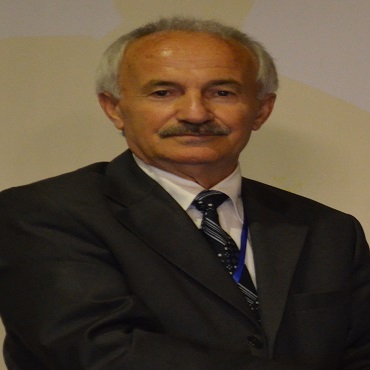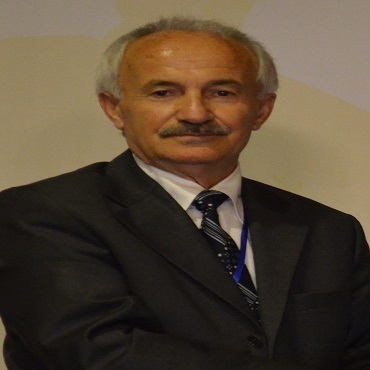
Energy 2022

Theme: New Possibilities of Renewable and Nonrenewable Energy for a Sustainable World
The 21st International Conference on Energy and Sustainable Environment which will be held during December 07-08, 2022 in Dubai, UAE. Deliberating the world, global warming suppression is compelling matter. Coping these issues, we are developing new projects involving renewable energy using innovative ideas in renewable and non-renewable energy Conference. Open presentation and discussion in the Energy Meeting about on-going research, experiences and result quite significant toward the development of twenty-first-century technology, considering moreover the various worldwide scientific analysts to gather together. The theme of the conference is "New Possibilities of Renewable and Nonrenewable Energy for a Sustainable World".
Commercial activities of humans are over-burdening our air with carbon dioxide and other unnatural weather change emanations, which trap warm, relentlessly drive up the planet's temperature and make critical and unsafe effects on our well-being, our condition and our atmosphere.
Commercial activities of humans are over-burdening our air with carbon dioxide and other unnatural weather change emanations, which trap warm, relentlessly drive up the planet's temperature and make critical and unsafe effects on our well-being, our condition and our atmosphere.
Session 1: Approaching Hybrid Renewable Energy
Hybrid power generating system drawbacks can be avoided partially/completely, depending on the control units. As the one or more drawbacks can be overcome by the other, as in northern hemisphere it is generally seen that in windy days the solar power is limited and vice versa and in summer and rainy season the biomass plant can operate in a full flagged so the power generation can be maintained in the above stated condition. The cost of solar panel can be subsided by using glass lenses, mirrors to heat up a fluid which can rotate the common turbine used by wind and other sources.
Keywords: Wind Energy Summits | Energy Conferences | Renewable and Non Renewable Energy Conferences | Energy USA Meetings | Renewable wind Energy meetings | Energy Conference| Renewable Energy Conferences | Energy Conferences | Green Energy Conferences | Power and Energy Conferences | Bioenergy Conferences | Recycling and Waste Management Conference
Session 2: Bioenergy and Bio Technology
Bioenergy is the single major renewable energy source today, giving 10% of world key energy supply. It plays a crucial role in many developing nations, where it gives basic energy to cookery and space warming, yet frequently at the cost of extreme well-being and biological effects. The planning of cutting edge biomass cook stoves, tidy fills and additional off-grid biomass influence supply in creating nations are key measures to enhance the present occurrence and accomplish all inclusive access to clean energy facilities by 2030.
Session 3: Hydro Power Plants
Global Hydro power Market is poised to achieve 1,300 GW by 2024, in line with a brand new analysis report by world Market Insights Rising electricity demand not to mention increasing investment towards property energy can stimulate the world hydropower market size. As per the International Energy Agency (IEA), electricity accounted for over eightieth of the whole renewable energy combine. North America and Europe have introduced plans to upgrade, renovate and modernize the prevailing stations to confirm a lot of economical operations.
Session 4: Fossil and Radioactive Energy
In EIA's Annual Energy Outlook 2016 Reference case projections, that replicates current laws and policies that proportion declines to seventy six.6% by 2040. Policy modifications or technology breakthroughs that surpass the trend enhancements bounded within the Reference case may considerably change that projection. In 2015, the renewable share of energy consumption In the world was its largest since the Thirties at nearly 100%. The best growth in renewables over the past decade has been in star and wind electricity generation.
Session 5: Hydro Power Generation and Geothermal Energy
Geothermal Energy and Hydro Power Generation in Colombia’s electricity market by the year 2025, based on a review of current installed capacity in the country; potential sources of geothermal energy for electric power generation; the existing regulatory framework for projects involving renewable sources, and the geothermal projects currently under development in the national territory. using the potential energy of rivers, now supplies 17.5% of the world's electricity (99% in Norway, 57% in Canada, 55% in Switzerland, 40% in Sweden, 7% in USA). Hydropower is one of the biggest renewable sources of energy. Geothermal energy is the heat from the Earth.
Session 6: Global Impacts of Non-Renewable Resources
Changes in the value of non-renewable commodities also affect the sizes of their economically recoverable reserves. the life cycle in the economy of some non-renewable resources, particularly metals, can be extended by recycling. However, there are thermodynamic and economic limits to recycling, which means the process cannot be 100% efficient. This has resulted in an accelerating demand for non-renewables that must be satisfied by mining additional quantities from the environment. The most important classes of non-renewable resources are metals, fossil fuels, and certain other minerals such as gypsum and potash.
Session 7: Waste to Energy and Smart Grid Systems
Approximately one.6 million individuals worldwide an active within the exercise business. Together, they handle quite 600 million tones of recyclables once a year. With an annual turnover of quite $200 billion, almost like the gross domestic product of nations like Portuguese Republic, Colombia and Asian Nation, the arena has already become a key driver for tomorrow’s property development. Regarding 100% of this quantity is spent on new technologies, analysis and development that contribute to creating} high-skilled jobs and making exercise a lot of economical and environmentally sound. By 2025 the world could generate 2.2 billion tons of MSW per year. Such a prediction forces us to consider and develop alternatives for addressing our future waste management (WM) challenges.
Session 8: Solar Energy Systems
Solar energy is the sparkling and most available renewable energy source. Modern technology can harness this energy for a variety of uses, including producing electricity, providing light and heating water for domestic, commercial or industrial application. The world solar energy industry is estimated to reach $422 billion by 2022 from $86 billion in 2015, expanding at a CAGR of 24.2% from 2016 to 2022. In our, Solar Energy Meeting will discuss solar energy efficient form of unconventional energy and a convenient renewable solution toward growing greenhouse emissions and global warming. The main concern of Solar Energy in Energy Conference is Solar electric (PV) and solar thermal (ST) technologies, The reason for taking this Solar Energy Meeting is the Singapore solar market is currently building primarily on PV systems.
Session 9: Wind Energy
Wind energy is now the second fastest-growing source of electricity in the world, with a global installed capacity of 539,581 megawatts (MW) at the end of 2017. There are also over 89,000 MW of wind capacity operational in the U.S., as of January 2018, Wind energy (or wind power) describes the process by which wind is used to generate electricity. Wind turbines convert the kinetic energy in the wind into mechanical power. A generator can convert mechanical power into electricity. Mechanical power can also be utilized directly for specific tasks such as pumping water.
Session 10: Renewable and Non-Renewable Energy
The renewable energy source is vitality that is shaped from normal procedures that are persistently recharged. This incorporates sunlight, geothermal heat, wind, tides, water and different types of biomass. This Dynamism can't be exhausted and is continually recharged. Renewable energy technologies range solar power, wind power, hydroelectricity/micro hydro, and biomass and bio fuels for transportation. The utilization of Renewable fuels dates to Neolithic times when cave tenants made fire from wood and different biomass for cooking and heating. For a large number of years from that point, the sustainable power source was all people utilized. The little measures of vitality obtainable to people through habitual distributed supportable power sources oblique that for centuries, human lives stayed unaltered.
Session 11: Sustainable Development
While developed countries have long been leaders in renewable power generation, rising economies square measure near passing them, delivery their total put in the capability of wind and star to 307GW and 272GW, severally fifty-one percent and fifty-three percent of worldwide capability, in step with Moody’s calculations. China accounts for the lion’s share of the upsurge. However and geographic area countries are scheduled to own put in 14GW in star plants by the top of 2018, a seven-fold increase from 2015. Central and South America also are expected to achieve 14GW, nearly 5 times over in 2015, whereas the Asian nation is about to hit 28GW, a jump of nearly six fold.
Session 12: Trends in Renewable Energy
Renewable energy will account for 55% of the total installed power capacity by 2030. As per the Central Electricity Authority (CEA) estimates, by 2029-30, the share of renewable energy generation would increase from 18% to 44%, while that of thermal is expected to reduce from 78% to 52%. According to the year-end review (2020) by the Ministry of New and Renewable Energy, another 49.59 GW of renewable energy capacity is under installation and an additional 27.41 GW of capacity has been tendered. This puts the total capacity of renewable energy projects (already commissioned or in the pipeline) at ~167 GW. The ‘green city’ will mainstream environment-friendly power through solar rooftop systems on all its houses, solar parks on the city’s outskirts, waste to energy plants and electric mobility-enabled public transport systems.
Hybrid power generating system drawbacks can be avoided partially/completely, depending on the control units. As the one or more drawbacks can be overcome by the other, as in northern hemisphere it is generally seen that in windy days the solar power is limited and vice versa and in summer and rainy season the biomass plant can operate in a full flagged so the power generation can be maintained in the above stated condition. The cost of solar panel can be subsided by using glass lenses, mirrors to heat up a fluid which can rotate the common turbine used by wind and other sources.
Keywords: Wind Energy Summits | Energy Conferences | Renewable and Non Renewable Energy Conferences | Energy USA Meetings | Renewable wind Energy meetings | Energy Conference| Renewable Energy Conferences | Energy Conferences | Green Energy Conferences | Power and Energy Conferences | Bioenergy Conferences | Recycling and Waste Management Conference
Session 2: Bioenergy and Bio Technology
Bioenergy is the single major renewable energy source today, giving 10% of world key energy supply. It plays a crucial role in many developing nations, where it gives basic energy to cookery and space warming, yet frequently at the cost of extreme well-being and biological effects. The planning of cutting edge biomass cook stoves, tidy fills and additional off-grid biomass influence supply in creating nations are key measures to enhance the present occurrence and accomplish all inclusive access to clean energy facilities by 2030.
Session 3: Hydro Power Plants
Global Hydro power Market is poised to achieve 1,300 GW by 2024, in line with a brand new analysis report by world Market Insights Rising electricity demand not to mention increasing investment towards property energy can stimulate the world hydropower market size. As per the International Energy Agency (IEA), electricity accounted for over eightieth of the whole renewable energy combine. North America and Europe have introduced plans to upgrade, renovate and modernize the prevailing stations to confirm a lot of economical operations.
Session 4: Fossil and Radioactive Energy
In EIA's Annual Energy Outlook 2016 Reference case projections, that replicates current laws and policies that proportion declines to seventy six.6% by 2040. Policy modifications or technology breakthroughs that surpass the trend enhancements bounded within the Reference case may considerably change that projection. In 2015, the renewable share of energy consumption In the world was its largest since the Thirties at nearly 100%. The best growth in renewables over the past decade has been in star and wind electricity generation.
Session 5: Hydro Power Generation and Geothermal Energy
Geothermal Energy and Hydro Power Generation in Colombia’s electricity market by the year 2025, based on a review of current installed capacity in the country; potential sources of geothermal energy for electric power generation; the existing regulatory framework for projects involving renewable sources, and the geothermal projects currently under development in the national territory. using the potential energy of rivers, now supplies 17.5% of the world's electricity (99% in Norway, 57% in Canada, 55% in Switzerland, 40% in Sweden, 7% in USA). Hydropower is one of the biggest renewable sources of energy. Geothermal energy is the heat from the Earth.
Session 6: Global Impacts of Non-Renewable Resources
Changes in the value of non-renewable commodities also affect the sizes of their economically recoverable reserves. the life cycle in the economy of some non-renewable resources, particularly metals, can be extended by recycling. However, there are thermodynamic and economic limits to recycling, which means the process cannot be 100% efficient. This has resulted in an accelerating demand for non-renewables that must be satisfied by mining additional quantities from the environment. The most important classes of non-renewable resources are metals, fossil fuels, and certain other minerals such as gypsum and potash.
Session 7: Waste to Energy and Smart Grid Systems
Approximately one.6 million individuals worldwide an active within the exercise business. Together, they handle quite 600 million tones of recyclables once a year. With an annual turnover of quite $200 billion, almost like the gross domestic product of nations like Portuguese Republic, Colombia and Asian Nation, the arena has already become a key driver for tomorrow’s property development. Regarding 100% of this quantity is spent on new technologies, analysis and development that contribute to creating} high-skilled jobs and making exercise a lot of economical and environmentally sound. By 2025 the world could generate 2.2 billion tons of MSW per year. Such a prediction forces us to consider and develop alternatives for addressing our future waste management (WM) challenges.
Session 8: Solar Energy Systems
Solar energy is the sparkling and most available renewable energy source. Modern technology can harness this energy for a variety of uses, including producing electricity, providing light and heating water for domestic, commercial or industrial application. The world solar energy industry is estimated to reach $422 billion by 2022 from $86 billion in 2015, expanding at a CAGR of 24.2% from 2016 to 2022. In our, Solar Energy Meeting will discuss solar energy efficient form of unconventional energy and a convenient renewable solution toward growing greenhouse emissions and global warming. The main concern of Solar Energy in Energy Conference is Solar electric (PV) and solar thermal (ST) technologies, The reason for taking this Solar Energy Meeting is the Singapore solar market is currently building primarily on PV systems.
Session 9: Wind Energy
Wind energy is now the second fastest-growing source of electricity in the world, with a global installed capacity of 539,581 megawatts (MW) at the end of 2017. There are also over 89,000 MW of wind capacity operational in the U.S., as of January 2018, Wind energy (or wind power) describes the process by which wind is used to generate electricity. Wind turbines convert the kinetic energy in the wind into mechanical power. A generator can convert mechanical power into electricity. Mechanical power can also be utilized directly for specific tasks such as pumping water.
Session 10: Renewable and Non-Renewable Energy
The renewable energy source is vitality that is shaped from normal procedures that are persistently recharged. This incorporates sunlight, geothermal heat, wind, tides, water and different types of biomass. This Dynamism can't be exhausted and is continually recharged. Renewable energy technologies range solar power, wind power, hydroelectricity/micro hydro, and biomass and bio fuels for transportation. The utilization of Renewable fuels dates to Neolithic times when cave tenants made fire from wood and different biomass for cooking and heating. For a large number of years from that point, the sustainable power source was all people utilized. The little measures of vitality obtainable to people through habitual distributed supportable power sources oblique that for centuries, human lives stayed unaltered.
Session 11: Sustainable Development
While developed countries have long been leaders in renewable power generation, rising economies square measure near passing them, delivery their total put in the capability of wind and star to 307GW and 272GW, severally fifty-one percent and fifty-three percent of worldwide capability, in step with Moody’s calculations. China accounts for the lion’s share of the upsurge. However and geographic area countries are scheduled to own put in 14GW in star plants by the top of 2018, a seven-fold increase from 2015. Central and South America also are expected to achieve 14GW, nearly 5 times over in 2015, whereas the Asian nation is about to hit 28GW, a jump of nearly six fold.
Session 12: Trends in Renewable Energy
Renewable energy will account for 55% of the total installed power capacity by 2030. As per the Central Electricity Authority (CEA) estimates, by 2029-30, the share of renewable energy generation would increase from 18% to 44%, while that of thermal is expected to reduce from 78% to 52%. According to the year-end review (2020) by the Ministry of New and Renewable Energy, another 49.59 GW of renewable energy capacity is under installation and an additional 27.41 GW of capacity has been tendered. This puts the total capacity of renewable energy projects (already commissioned or in the pipeline) at ~167 GW. The ‘green city’ will mainstream environment-friendly power through solar rooftop systems on all its houses, solar parks on the city’s outskirts, waste to energy plants and electric mobility-enabled public transport systems.
The 2018 Edition of the REN21 Global Status Report announced a global energy transition well underway, with record new inclusion of installed renewable energy capacity, briskly falling costs and the decoupling of economic growth and energy-related carbon dioxide (CO2) emissions. This year’s report keeps long-standing tradition of providing the most up-to-date data and analytical info graphics to detail renewable energy’s contribution to the energy conversion.The year 2016 saw several advancements and ongoing trends that all have a bearing on renewable energy, having the preservation of low global fossil fuel prices, price reductions of several renewable energy technologies and increase in attention to energy storage. For the third consecutive year, global energy-related carbon dioxide (CO2) emissions from fossil fuels and industry were nearly flat in 2016, rising 0.2%, continuing to break away from the trend of 2.2% average growth during the previous decade. While developed countries have long been leaders in renewable power generation, rising economies square measure near passing them, delivery their total put in capability of wind and star to 307GW and 272GW, severally fifty one per cent and fifty three per cent of worldwide capability, in step with Moody’s calculations. China accounts for the lion’s share of the upsurge. However and geographic area countries are scheduled to own put in 14GW in star plants by the top of 2018, a seven-fold increase from 2015. Central and South America also are expected to achieve 14GW, nearly 5 times over in 2015, whereas Asian nation is about to hit 28GW, a jump of nearly sixfold.
Research and Business Value:
America Region:
Despite policy uncertainty, the U.S. remains the second-largest growth marketplace for renewables. the most drivers stay sturdy for brand spanking new onshore wind and star capacities, like multi-year federal tax incentives combined with renewable portfolio standards still as state-level policies for distributed star PV. Still, this uncertainty over planned federal tax reforms, international trade and energy policies may have implications for the relative economic science of renewables and alter their enlargement over the forecast amount.
The European Union:
In the European Economic Community, renewable growth over the forecast amount is four-hundredth lower compared with the previous five-year amount. Overall, weaker electricity demand, overcapacity and restricted visibility on forthcoming auction capability volumes in some markets stay challenges to renewable growth. Policy uncertainty on the far side 2020 remains high. If adopted, the new EU Renewable Energy Directive covering the post-2020 amount would address this challenge by requiring a three-year visibility over support policies, thereby raising the market’s foregone conclusion
Asia pacific:
For the primary time, Renewables 2017 tracks off-grid star PV applications a lot of closely in developing Asia and sub Saharan Africa. Over the forecast amount, off-grid capability in these regions can nearly triple reaching over three 000 MW in 2022 from industrial applications, star home systems (SHSs) and mini-grids driven by government electrification programs and personal sector investments.
Research and Business Value:
America Region:
Despite policy uncertainty, the U.S. remains the second-largest growth marketplace for renewables. the most drivers stay sturdy for brand spanking new onshore wind and star capacities, like multi-year federal tax incentives combined with renewable portfolio standards still as state-level policies for distributed star PV. Still, this uncertainty over planned federal tax reforms, international trade and energy policies may have implications for the relative economic science of renewables and alter their enlargement over the forecast amount.
The European Union:
In the European Economic Community, renewable growth over the forecast amount is four-hundredth lower compared with the previous five-year amount. Overall, weaker electricity demand, overcapacity and restricted visibility on forthcoming auction capability volumes in some markets stay challenges to renewable growth. Policy uncertainty on the far side 2020 remains high. If adopted, the new EU Renewable Energy Directive covering the post-2020 amount would address this challenge by requiring a three-year visibility over support policies, thereby raising the market’s foregone conclusion
Asia pacific:
For the primary time, Renewables 2017 tracks off-grid star PV applications a lot of closely in developing Asia and sub Saharan Africa. Over the forecast amount, off-grid capability in these regions can nearly triple reaching over three 000 MW in 2022 from industrial applications, star home systems (SHSs) and mini-grids driven by government electrification programs and personal sector investments.
Top Universities:
- Penn State World Campus University Park, PA
- University of California, Berkeley, CA
- Massachusetts Institute of Technology, Cambridge, MA
- Stanford University, Stanford, CA
- University of North Texas
- Oregon State University
- Indiana University
- University of Maryland , College Park, MD
- Hanze University of Applied Sciences
- Royal Institute of Technology
- Moscow State Institute of International Relations
- University of Applied Sciences Offenburg
- Approaching Hybrid Renewable Energy
- Bioenergy and Bio Technology
- Hydro Power Plants
- Fossil and Radioactive Energy
- Hydro Power Generation and Geothermal Energy
- Global Impacts of Non-Renewable Resources
- Waste to Energy and Smart Grid Systems
- Solar Energy Systems
- Wind Energy
- Renewable and Non-Renewable Energy
- Sustainable Development
- Trends in Renewable Energy
- Journal of Nuclear Energy Science & Power Generation Technology
2 Organizing Committee Members
3 Renowned Speakers
Osman Adiguzel
Firat University, Turkey
Turkey
Yahia CHERGUI
Houari Boumedienne University Algeria
Algeria
Adekunle Atanda
University of Ibadan, Nigeria
Nigeria






















































































































